Get The Visibility Your Company Needs
Reduce compliance risks and mobility costs while managing individual and project-related travel with ImmiSMART: the solution that unifies your travel and mobility programs.
CHINA UPDATE: Using Immigration as Competitive Advantage
June 29, 2018
While many nations around the world seem to view immigration as a threat to their economies and are tightening immigration as a means of protecting their fragile economic advantages, China seems to be increasingly viewing immigration as a tool of economic expansion and competitive advantage. Traditionally a country of significant emigration into the rest of the world, China is increasingly becoming a destination of immigration for highly-skilled foreign talent from around the world.
Much has been written about China’s increasing outward push to take its position as the dominant economic power in the world economy. Major investments in the economies of other nations through it’s “belt and road” initiative and increased trade with the nations of central Asia, Africa, and Latin America are extending Chinese influence around the world.
However, there is also currently a simultaneous inward trend in China that may be going unnoticed by some. The last several years have seen a significant opening of China’s borders to foreign nationals to participate in China’s economic expansion, which most economists suggest will result in it surpassing the United States as the world’s largest economy by 2030.
In March of this year, a plan was presented at the National People’s Congress in Beijing to consolidate and streamline China’s immigration management into a single State Immigration Administration, simplifying processes by combining functions currently handled by separate agencies. The stated purpose of creating this new agency focused on immigration policy and management was to coordinate a more open border and administer plans to attract more highly-skilled foreign labour.
While that plan is still in preparation stages, several other recent immigration policy developments already implemented illustrate this ongoing trend. China is definitely “upping its game” in the global competition to attract the best global talent – particularly in science and technology – to help build its future.
Shanghai and the Growing Expat Population
The Chinese city of Shanghai is perhaps a microcosm of where China appears to be going. Shanghai has quickly become one of the most international and cosmopolitan cities of Asia. Reportedly the largest populated city in the world, some sections of modern Shanghai now more closely resemble the western cities of New York, London, and Paris than the Yangtze Delta trading seaport of just a generation ago.
Included in Shanghai’s estimated 25 million residents are up to as many as 300,000 foreign nationals residing and working in the city. Chinese government figures suggest that the total expat population in China may now be as high as 1 million – double the level of just seven years ago.
Not satisfied to simply maintain the status quo, Chinese media earlier this year reported that local government leaders in Shanghai have laid out an ambitious plan to increase the expat population in Shanghai alone to 800,000 by 2035. If accomplished, Shanghai would have more foreign residents than present-day Hong Kong. Whether that goal is realistically achievable remains to be seen, but what is clear is that economic development leaders in Shanghai and China want more foreign residents. This is especially true of highly-skilled and/or highly-compensated foreign nationals that Shanghai and China view as key to its economic success.
In 2015 and 2016, authorities relaxed requirements for highly-skilled and highly-compensated foreign nationals living in Shanghai to obtain Chinese Permanent Residence Permits (aka “Chinese Green Cards”). Changes to the regulations decreased the residency requirement in some cases to just three years and reduced application processing time to just 90-days. The same moves upped the potential validity period on employment-based residence permits to five years, waived maximum age restrictions, and loosened the entry visa process for such foreign nationals.
While the overall number of foreign nationals obtaining permanent residence in China each year remains relatively low, the reforms appear to be making a difference. In 2016, over 1,500 foreign nationals were granted permanent residency, a 160+ percent increase over the previous year.
Also further streamlining processes for foreign nationals in 2017, Shanghai authorities began accepting work permit applications for highly-skilled applicants already in-country on business and tourist visas. This sped the process for some foreign nationals to start work in Shanghai by as much as six to eight weeks. Just this April, Shanghai further improved processes for high-skills foreign nationals applying for residence permits by introducing an online pre-assessment system designed to speed the overall processing times.
New Work Permits System
Much of the immigration news in China in 2017 was centred around China’s ambitious introduction of a new nationwide foreigners’ work permit system. The new system brought most employment authorization processes for foreign nationals online and sought to standardize the previous system, with its numerous provincial variations, into a more standardized nation-wide system. Not without its implementation challenges, the new nation-wide system should bring long-term improvements beneficial to foreign nationals working in China.
At the core of the new work permits system was the clear desire to attract more foreign talent to China by making it easier for high-skills foreign nationals to obtain work and residence authorization. The new points-based component specifically makes obtaining work permits easier for those in the “high-end personnel” and “professional personnel” categories, rewarding such factors as highly compensated positions in Fortune 500 companies, innovative entrepreneurs, and candidates with advanced degrees from “top 100” universities.
Talent (R) Visas
In January of this year, authorities introduced new regulations for the “R Visa” for high-level foreign talent. Under the new rules, eligible foreign nationals may receive these visas for business purposes with validity periods of up to ten years, permitting multiple stays of 180 days each time, with spouses and children eligible to accompany. While the rule change is still officially in a pilot phase, the longer validity and stay periods and an expedited application process is currently being used in nine provinces, including Shanghai and Beijing.
Visas for Foreigners of Chinese Descent
In February of this year, authorities introduced a new five-year multiple-entry visa and residence permit for individuals of Chinese descent now living abroad. Previously, these overseas ethnic Chinese (having a parent, grandparent or other ancestor who was a Chinese citizen) were limited to one-year visas. The clear intent of the change was to encourage talented and well-to-do Chinese to return and participate in China’s growing economy – whether as consumers or entrepreneurs.
Chinese science and technology companies and universities, with the aid of state-sponsored programs like the Thousand Talents program, have for years been actively enticing Chinese educated at overseas universities to return to China with increasingly competitive salaries, signing bonuses, and research support. The new relaxations in visa policy for such individuals only adds to those efforts.
Hainan Island’s New Visa-Free Policy
While not necessarily targeted at just high-skills foreign nationals, but nevertheless an example of China’s increasing openness, Chinese authorities recently rolled out a new visa-free scheme for Hainan Island. Beginning in May of this year, authorities began offering visa-free entry to the island province of Hainan to visitors from 59 countries for 30-day stays. Eligible nationals included those of all of North America, most of Europe, the major countries of South America, Australia and New Zealand, and eleven other Asian countries. While the policy targets tourism, with applicants required to go through a travel agency, it is another clear example of China’s increasing use of immigration policy as an economic development strategy. Many observers believe this new policy in Hainan is being used by the government to test for future similar geographically targeted visa-free programs elsewhere in China.
China’s smallest and southern-most province, sitting on an island just 500 kilometres from the cities of Hong Kong, Guangzhou, and Macao, Hainan has traditionally been predominantly an agricultural area. However, in 2009, the Chinese central government began concerted plans to develop Hainan into an international tourist destination, taking advantage of its tropical beaches and forests.
Simultaneous to the announcement of the increased visa-free policy, the Chinese central government also announced plans to transform Hainan into the nation’s largest free-trade zone and a number of legal reforms designed to lower barriers to foreign investment. Reportedly, the government has already ear-marked the funds to begin construction on a large free trade port slated to be finished by 2025. Admittedly ambitious, the long-term aim is to turn Hainan into a major international tourism and trade destination akin to its neighbours Hong Kong and Macau.
Final Thoughts on Opportunities in China
There is no doubt an opening of immigration currently ongoing in China, and that opening is clearly intended to attract foreign investment and talent and support local economic expansion. While on other fronts China continues to be a challenging market for international business, navigating the immigration piece for foreign nationals entering the Chinese labour market is becoming increasingly easier. This should in the long-term present greater opportunities for international business and talented foreign nationals looking to participate in what will become the largest world economy in the not too distant future.
Global thinking companies would be wise to consider the opportunities presented by this trend toward greater openness and definitely keep China on their radar (if it isn’t already). This blog presented only an overview of the trend. For those wanting more detailed information, you are encouraged to reach out to your Newland Chase immigration specialists in either our Shanghai or Tianjin offices or contact our APAC regional office in Singapore at [email protected].
Readers are also referred to additional online resources and information on China and Newland Chase’s capabilities in the country at newlandchase.com. Alerts on the latest changes in China immigration can be found at https://blog.newlandchase.com/ and an introduction to Wendy Xie, our new Managing Director for China can be found here.



